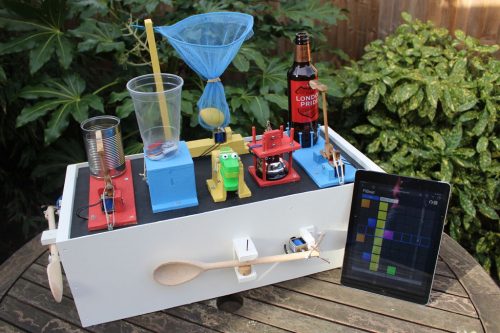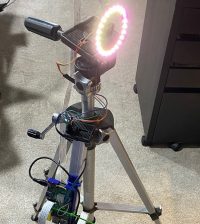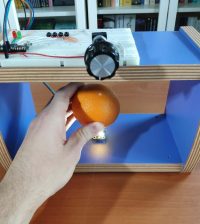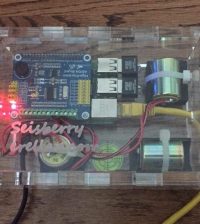- makeITcircular 2024 content launched – Part of Maker Faire Rome 2024Posted 2 weeks ago
- Application For Maker Faire Rome 2024: Deadline June 20thPosted 2 months ago
- Building a 3D Digital Clock with ArduinoPosted 7 months ago
- Creating a controller for Minecraft with realistic body movements using ArduinoPosted 7 months ago
- Snowflake with ArduinoPosted 8 months ago
- Holographic Christmas TreePosted 8 months ago
- Segstick: Build Your Own Self-Balancing Vehicle in Just 2 Days with ArduinoPosted 8 months ago
- ZSWatch: An Open-Source Smartwatch Project Based on the Zephyr Operating SystemPosted 9 months ago
- What is IoT and which devices to usePosted 9 months ago
- Maker Faire Rome Unveils Thrilling “Padel Smash Future” Pavilion for Sports EnthusiastsPosted 10 months ago
The Junk Drum Machine

Want to see this collection of junk animate? Scroll down for video.
From someone calling themselves Banjowise (let me know what your real name is in the comments, please, so I can credit you properly here!), here is a pile of junk turned into a weirdly compelling drum machine.
Mechanically speaking, this isn’t too complicated: just a set of solenoids triggered by a Raspberry Pi. The real clever is in the beauteous, browser-based step sequencer Banjowise has built to program the solenoids to wallop things in beautiful rhythm. And in the beauteous, skip-sourced tchotchkes that Banjowise has found for them to wallop. Generously, they’ve made full instructions on making your own available on Instructables. Use any bits and bobs you can get your hands on if old piano hammers and crocodile castanets are not part of the detritus kicking around your house.
Warning: this video is weirdly compelling.
Automabeat – A Raspberry Pi Mechanical Robotic Junk Drum Machine
My Raspberry Pi based drum / percussion machine. Consisting of 8 12v solenoids, a relay, wooden spoons, a Fullers beer bottle, a crocodile maraca and a few other things. An Instructable on how to build your own is here: https://www.instructables.com/id/A-Raspberry-Pi-Powered-Junk-Drum-Machine/, or take a look at: http://www.banjowise.com/post/automabeat/
The sequencer is lovely: a gorgeously simple user interface that you can run on a tablet, your phone, or anything else with a browser (and it’s very easily adaptable to other projects). The web interface lets Python trigger the GPIO pins over web sockets. There’s a precompiled version available for people who’ve followed Banjowise’s comprehensive wiring instructions, but you can also get the source code from GitHub.

I think I’m getting good, but I can handle criticism.
We love it. Now please excuse me. I need a little while to search online for crocodile castanets.
The post The Junk Drum Machine appeared first on Raspberry Pi.















